The Victoria Inn, briefly known as The New Vic before being converted into two homes, was built originally as a
grocer's shop. It was an add on to the main terrace of houses in Richmond Road as it was originally numbered 31A. The semi-detached Richmond Road villa on the opposite side of the
of Mayo Road, now a wing of Mayo
, was originally numbered 29 and 31. After the Second World
, No. 31 was
to make way for extensions to the boiler room at the Mayo
. No 29 was demolished when laundry closed in the mid 1980s. The main entrance to the laundry was a 6 Mayo Road. In its place, 32 flats were built with car parking originally intended to prevent the occupants adding to on-street demand.
The semi detached villas in Richmond Road, dating from the 1860s, are meant to have been built for the
at the barracks. If you look at the
- 1851, 1861,1871 - you do find one or two officers, both on the north side of Richmond Road and down in Roundhill Crescent (with The Sixth Green Guards) but not
.
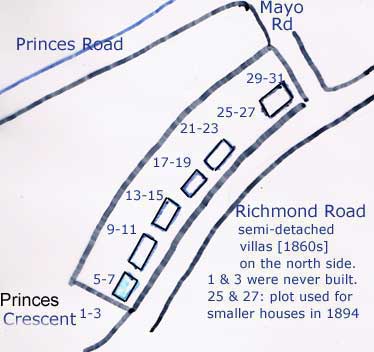
Until 1894 there was a notable gap on the
where you would have expected a semi-detached villa numbered 25 and 27 Richmond Road to be, between numbers 29 and 31 and the semi-detached villa 21 and 23 later to form the Golf
Factory.
Instead of another semi-detached villa, in 1894 the
plot was filled
three terraced houses, originally 25, 27 and 27a, but now numbered 25, 27 and 29. Note too that a plot to the west of villa 5 and 7 was once intended for a semi-detached villa numbered 1 and 3, but that was never built. Instead, the frontage of this plot has been allocated to Princes Crescent. 97 Princes Crescent appears today as if it should clearly be part of Richmond Road, which is somewhat
.
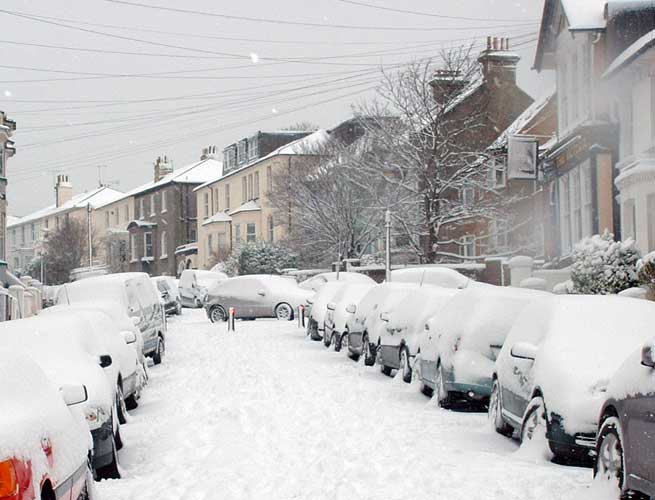
The Victoria Inn, as the green grocer's shop became, was probably built at the turn of the century.

We are now at the north end of Mayo Road and will be turning into
Road. It seems strange stopping at a wooden fence with nothing behind except an industrial
. Well up to the early 1970s, in this vicinity was a little flint farmhouse. There was an elderly couple down there. They
goats, they kept chickens. They left at about the
that the railway shut down -1971. You would have thought that a
flint farmhouse would have been precious to somebody, but it was
over one Christmas, when nobody would know anything about it until it was too
.
The industrial estate is built
the main route of the railway line. Residents
to the east of the Lewes Road railway viaduct were lucky to have a ward Councillor who fought for the former railway land to remain as
space. William Clarke park is named after him, though this pleasant strip of
which serves many densely packed residential streets is better known as The Patch - also the name of its own annual festival. William was better
to his friends as Nobby Clarke.
Back to Round Hill. Adjacent to the farmhouse, which predated the Centenary Industrial Estate was the signalman’s
. The signalman who lived there operated the points controlling the junction of the branch
to Kemp Town. The cottage was rented out by the railway. There was still a railwayman there throughout
of the 1970s. There was a zigzag
up to Princes Road and he could often be seen walking to and
London Road Station.
The buildings all went in 1984 when they built the Centenary
Estate and the Sainsbury's at the Vogue
.
A small plot remained at the NE end of Princes Road, now occupied by the
Carelet houses. This used to be a farm yard with
. The two ponies were sometimes seen exercising in Princes Road. In the early 1980s, the plot was owned by an ex inland
officer who became a market gardener. He kept several chickens and some residents nicknamed him "Chicken John", though it was the sound of a cockeral which woke neighbours up. He kept other animals too, but in rather
conditions. This led to him going to
for ill treating the animals.
In 1997, the plot was purchased for about £12,000 by the
living at 67 Princes Road. At the time, this was the most easterly house with a garden
to the railway. 69 to 81 were
additions to Princes Road and had truncated back
in front of the plot where the ponies once exercised. The husband was a builder, the wife became a member of The Round
Society committee after it was founded in late 1999. He used the plot for storing building
and she worked
to create an organic garden.
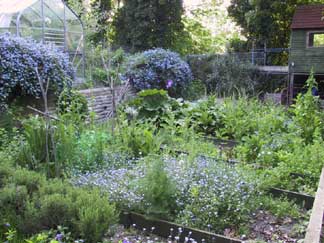
They had a large family so there were play facilities as
as a tree house.
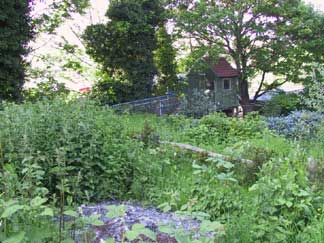
Local children got together during the summer
of 2001 to see just how many living beasties they could
in one large garden in Princes Road. This survey was carried out in
by seven kids, who started by making a
of what had already been found in the garden
. They then spent a long summer afternoon setting pit fall traps and running around with sweep nets and pooters. Two enthusiastic
armed with wildlife guides were on hand to help identify the creatures found. Amazingly, they found 63 different
on that day, many of them mini beasts.
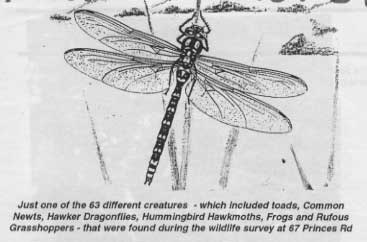
Just one of the 63 different creatures - which included toads, Common Newts, Hawker Dragonflies, Hummingbird Hawkmoths, Frogs and Rufous Grasshoppers - that were found during the wildlife
at 67 Princes Road.
The owners of 67 Princes Road also kept chickens and certain local residents would buy the
. In early 2004, the family moved out of Round Hill selling both 67 Princes Road and the undeveloped plot - a separate freehold - to a developer. The developer also
81 Princes Road - the end house next to the sole access to their greenfield
.